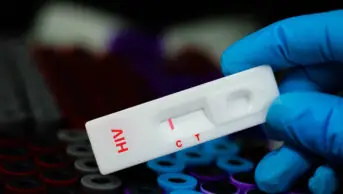I welcome the publication of the Department of Health and Social Care’s ‘Transforming NHS pharmacy aseptic services in England’ report, with its emphasis on reducing unwarranted and risk prone variation in practice across the NHS[1].
This report, published in October 2020, has the potential to finally implement recommendations made by the Breckenridge report in 1976 and Patient Safety Alert 20 in 2007 to minimise medication errors involving intravenous (IV) medicines[2][3]. Errors with these types of medicine are still common in the UK, with half of these errors involving medicine administration[4].
The headline grabbing objectives of the new report are to create regional hub-and-spoke pharmacy aseptic services so that production can be scaled up from the current 3.4 million doses of aseptic medicines to more than 40 million doses annually (based on the 12 most frequently used antimicrobial medicines alone). This is estimated to release the time of 4,000 whole-time equivalent nurses each year, who would be making up these doses on the ward.
Increasing patient safety by reducing errors in the manipulation and administration of injectable medicines is another stated aim of this report. However, I have a concern that the implementation of the report recommendations will focus on delivering the savings of nurse time from the 12 most used antimicrobial medicines, and not on reducing medication errors involving all IV medicines. Patient Safety Alert 20 provides a risk assessment tool for injectable medicines and procedures. The list in the report of the 12 most frequently used antibiotic injections does not include any high-risk injectables and it is important to take action to make the use of all injectable medicines safer, especially those identified as high risk. A specimen list of high-risk injectable medicines produced using the National Patient Safety Agency’s risk assessment tool is available on the Specialist Pharmacy Services website[5].
In 2020, the National Association of Medical Device Educators and Trainers (NAMDET) published a National Dose Error Reduction Software and smart pump position statement[6]. The publication provides evidence of the most frequent error with IV infusions: wrong rate of administration. The report highlights that benefits of using these devices to detect and minimise infusion rate errors has not been widely deployed throughout the NHS. Barriers to implementation of these devices include difficulties in gaining agreement on standard infusion concentrations; infusion rate limits; building/maintaining device drug libraries and electronic connectivity.
The NHS aseptic services transformation implementation board should work with groups like NAMDET and others to deliver significant patient safety improvements in the use of all IV medicines, alongside releasing nursing time.
David Cousins, safe medication practice consultant
- 1Transforming NHS pharmacy aseptic services in England . Department of Health and Social Care. 2020.https://www.gov.uk/government/publications/transforming-nhs-pharmacy-aseptic-services-in-england
- 2Specialist Pharmacy Service. Specialist Pharmacy Service. https://www.sps.nhs.uk/wp-content/uploads/2019/04/HC769-Health-Services-Development-Additon-of-Drugs-to-IV-Fluids-The-Breckenridge-Report-DH-1976-1.pdf
- 3Promoting safer use of injection medicines. National Patient Safety Agency. 2007.https://www.sps.nhs.uk/articles/npsa-alert-promoting-safer-use-of-injection-medicines-npsa-20-2007
- 4Sutherland A, Canobbio M, Clarke J, et al. Incidence and prevalence of intravenous medication errors in the UK: a systematic review. Eur J Hosp Pharm 2018;:3–8. doi:10.1136/ejhpharm-2018-001624
- 5Specimen high risk injectable medicines list. Specialist Pharmacy Service. 2016.https://www.sps.nhs.uk/wp-content/uploads/2016/12/Specimen-high-risk-list-Version-3_Final-28thNov16.pdf
- 6NAMDET DERS and SMART PUMP position statement report. National Association of Medical Device Educators and Trainers. 2020.https://namdet.org/2020/11/namdet-ders-and-smart-pump-position-statement-report/

